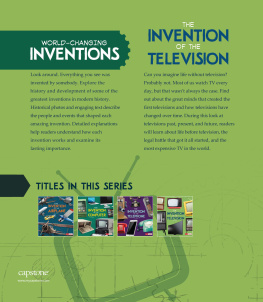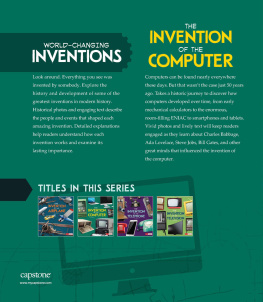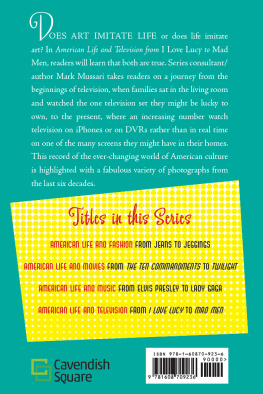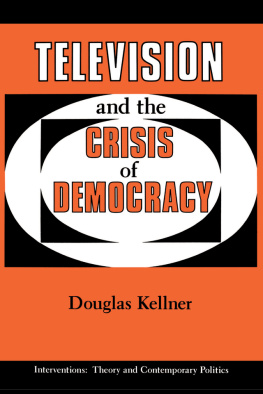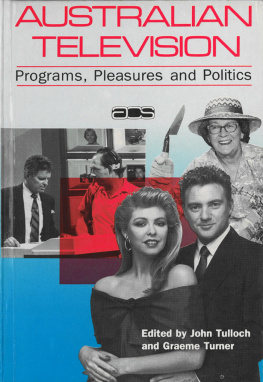1
THE FIRST MAN ON THE MOON
On July 20, 1969, millions of people around the world tuned in to watch the astronauts of the Apollo 11 mission land on the moon. Commander Neil Armstrong was the first man to step onto the moons surface. Buzz Aldrin followed a few minutes later. When the astronauts returned home on July 24, they were welcomed as international heroes. The Apollo 11 mission was a major success.
As Neil Armstrong set foot on the moon, he said the now famous words, Thats one small step for man, one giant leap for mankind.
The moon landing was filmed and around the world. The broadcast set a new world record, as more than half a billion people tuned in to watch the historic event. Even today, thats a lot of people watching one television show.
The Eagle detached from the main spacecraft to land on the moon.
2
BEFORE TELEVISION
Before television was invented, people entertained themselves in other ways. Families sat around the fireplace and told stories. They also read books, sang songs, and played instruments. They played card games and board games, such as chess and backgammon. Children also played with wooden toys. In the 1700s and 1800s, a favorite childrens game was hoop rolling.
In hoop rolling, the player tries to roll the hoop along the ground by hitting it with a stick.
THE RADIO IS INVENTED
By the late 1800s, the world was changing. People used more machines. The British Broadcasting Corporation (BBC) began broadcasting radio shows every day starting in 1922. The shows included music, news, and other entertainment. Listening to the radio quickly became very popular.
Before television, people listened to the radio for news and entertainment.
THE FIRST MOVIES
In the mid-1890s, movies were also invented. These moving pictures amazed people. At first, the movies showed pictures without sound. They were called silent movies. Musicians played live music to go along with the moving pictures.
In 1927, The Jazz Singer became the first successful full-length movie with sound. People called movies with sound talkies.
CHARLIE CHAPLIN
Charlie Chaplin was one of the first movie stars. He appeared in many famous silent movies, including The Kid (1921) and The Circus (1928).
Charlie Chaplin was a star of the silent-movie era.
MECHANICAL TELEVISION
The mechanical television was an early idea for sending moving pictures over long distances. In London, England, in 1926, John Logie Baird of Scotland showed the mechanical television hed invented. It used a spinning disk that copied a picture line by line. Then each line was sent to another disk. That disk put the image back together.
John Logie Baird in his workshop
In 1927, Baird formed the Baird Television Development Company (BTDC). In 1928 the BTDC became the first company to send televised pictures across the Atlantic Ocean between London and New York. The first mechanical TVs went on sale later that year.
The was changing rapidly, and someone needed to find a way to make clearer, faster pictures.
3
INVENTORS OF TELEVISION
People soon realized that if picture quality was going to improve, televisions would need to be electronic. Philo T. Farnsworth and Vladimir Zworykin were two early inventors of the electronic television. Their work led to the televisions we watch today.
PHILO T. FARNSWORTH
Philo T. Farnsworth was an American electrical . The signals could be sent from one place to another using electricity. Then the lines could be put back together to form a picture.
In 1927, Farnsworth filed a all-electronic television system.
Farnsworth holds his image dissector while standing next to his television. He received a patent for the image dissector in 1930.
VLADIMIR ZWORYKIN
Vladimir Zworykin was an electrical engineer from Russia. He moved to the United States in 1919. Zworykin was working on his own version of an all-electronic television system around the same time as Farnsworth. Zworykin called his system the iconoscope, and he applied for a patent for it in 1923. Similar to Farnsworths image dissector, the iconoscope could also change a picture into a radio signal. But Zworykin struggled to make the iconoscope work. Finally, in 1933, he was able to send a picture with the iconoscope. Zworykin received a patent for it in 1938.
Vladimir Zworykin holds an iconoscope.
DID YOU KNOW?
Early inventors used different names for the television. Some of these names were radiovision, radiovisor, and televisor.
While he worked on the radio signals. It changed the radio signals back into pictures.
Today, a monument showing Zworykin and his television is on display in Moscow, Russia.
LEGAL PROBLEMS
All of these inventions led to the creation of television as we know it today. But the race to make the first working system led to legal problems for Zworykin and Farnsworth. Zworykin worked for the Radio Corporation of America (RCA). RCA offered Farnsworth $100,000 for the patent to the image dissector, but Farnsworth refused. So RCA took Farnsworth to court. RCA tried to say that because Zworykin filed his patent first, Farnsworths shouldnt be legal. When the legal battles ended in 1939, the court ruled that RCA could sell electronic TVs for home use. But RCA had to pay Farnsworth $1 million for the rights to make the necessary television parts hed invented.
Farnsworth shows one of his early televisions. The small square at the top is where the picture was shown.
4

